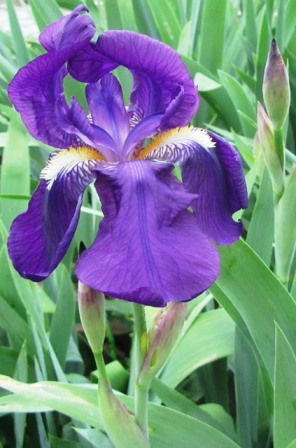The Joy of Growing Iris
Nothing beats the joy of an early morning walk in a garden and seeing iris plants in full bloom. These beauties are easy to grow, vigorous reproducers, and deer resistant.

Iris need six to eight hours of sun each day. If you live in a hot climate, your iris will need some shade protection. They perform best in well-drained soil.
The best time of the year to plant iris seems to be late summer or early fall when the temperature does not fall below 40 degrees Fahrenheit.

The rhizomes of iris tend to spread, so you’ll want to divide the clumps every three to four years. The best time to divide them is about six weeks after flowering.
To divide, dig up the clump, pull the rhizomes (roots) from the sides of the mother plant and then plant the new rhizomes, burying them so that the roots are pointing down and the top foliage (even if you have cut it back to a few inches) is exposed. Cover with soil, tamp down, and water well.
Space the iris rhizomes at least one to two feet apart. Planting too close together reduces the number of blooms. There are many varieties of iris to choose for your garden; two of the most common types are Bearded iris and Siberian iris. Plant some of these beauties and experience the joy of seeing them bloom in your garden.

If you enjoy reading about gardening and country living topics, check out my series of cozy mysteries based on my life on the “real” Henny Penny Farmette. The novels are chocked full of tips on gardening, keeping chickens and bees, and growing heirloom vegetables and fruits.

Barnesandnoble.com, and other online bookstores
My novels and self-help, spirituality, and wellness books are offered online and everywhere books are sold. Check out my author’s page on Amazon and also on Simon and Schuster.com.–Meera Lester
Tags: bearded iris, deer, gardening, rhizome, siberian iris
 Facebook
Facebook Goodreads
Goodreads LinkedIn
LinkedIn Meera Lester
Meera Lester Twitter
Twitter



